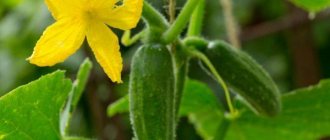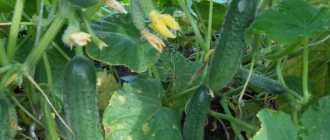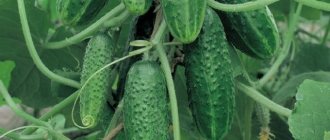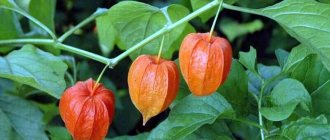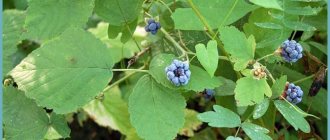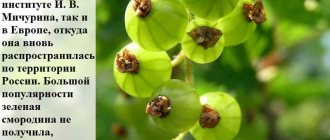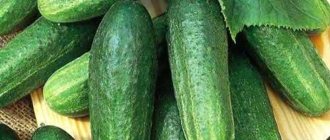White cucumbers
Cucumbers are not a rarity in the gardens of our summer residents throughout the country. But this culture still has specimens that can surprise even experienced gardeners. In this material we will talk about varieties of white cucumbers. We will tell you about the best of them, and also tell you about the rules for growing white cucumbers.
White cucumbers: characteristic features
The first varieties of white-fruited cucumbers were bred in the sixties and seventies. But they were not cultivated for production purposes at that time. White cucumbers were not popular. But thanks to breeders from China, such hybrid varieties were once again relevant. In Asian countries, the fruits of white cucumbers are in quite active demand.
When you come close to choosing varieties, then, first of all, look at the characteristics: what yield does the variety have, what taste does it have, what is the ripening period for this variety.
Many people compare varieties of white cucumbers with ordinary ones. Some of the main differences include:
1) The absence of the bitter component of the pulp in terms of taste in white cucumbers 2) White fruits have thinner and more delicate skin 3) White cucumbers have a richer and brighter aroma 4) Unlike green cucumbers, they are well resistant to sudden temperature changes 5) They have a very high resistance to heat, can develop successfully even at +45 degrees! 6) For green cucumbers, the slightest shading will not be beneficial, but for white cucumbers this is not a problem 7) White fruits can bear fruit in greenhouse conditions right up to frost. White varieties yield more abundantly than ordinary cucumbers, since the ovaries are located throughout the vine
6) For green cucumbers, the slightest shading will not be beneficial, but for white cucumbers this is not a problem 7) White fruits can bear fruit in greenhouse conditions right up to frost. White varieties yield more abundantly than ordinary cucumbers, since the ovaries are located throughout the vine
White cucumbers have many good qualities that make these varieties stand out from all others.
You can grow white varieties of cucumbers without fear of lower temperatures. They have a fairly high degree of frost resistance. When choosing a method for growing white cucumbers, as a rule, gardeners prefer trellis growing. This is due to the fact that these varieties have a powerful stem that can reach about three meters in length. This is good from the point of view of saving space, and the fruit also remains clean. White cucumbers are not affected by downy mildew, and are also not attacked by aphids, thanks to their strong immunity. There is no need to shape your plants, since they independently create ovaries on the shoots in the center and on the sides. Since these varieties do not contain green pigment, they are completely safe for people with allergies, and their unusual appearance will complement your dishes well. It is known that these vegetables contain many useful vitamins and other substances valuable to humans. The fruits of white cucumbers tolerate transportation well. So far, white-fruited cucumbers are not so popular on the Russian market.
General information and benefits
White-like varieties were first bred in the 60s of the 20th century.
They are named after the color of their skin. They are most widespread in Central Asia. In Russia they are becoming more and more famous, but it is not yet possible to find seeds in any store. Based on the type of fruit, they are divided into gherkin and long. The main advantages of this crop include its unpretentiousness, unique appearance, productivity, long shelf life of fruits, and immunity to common diseases to which cucumbers are susceptible. Plants love high humidity. White varieties have no significant disadvantages. Their culinary uses are the same as their green counterparts.
Important! To keep the soil loose and moist as long as possible, it needs to be mulched.
White cucumbers: the most successful varieties
Our assortment of planting material for such an unusual crop is very small. But there is still plenty to choose from. And here everyone decides for themselves which variety is best. White-fruited cucumbers can be intended for both open and closed ground, they can be smooth, or they can have spikes, they can be long or short. Also among the characteristics of different varieties, one can highlight the purpose of cucumbers (better for fresh consumption or for preparations), whether the plants are pollinated by bees or are parthenocarpic. Next, we will talk about the varieties that are most popular among gardeners.
Characteristics of the bush and fruits
Ovaries are formed both on the main stem and on the side branches. The bushes have powerful stems. The fruits are characterized by a white color. Some varieties have a greenish tint to the skin near the stalk. Cucumbers contain a large number of microelements beneficial for humans. Among the bred varieties there are both parthenocarpic and those pollinated by bees and other insects. This aspect must be taken into account when purchasing planting material.
The average yield for the crop is 10-14 kg per 1 m2. Such vegetables can be grown by seedlings or seeds, depending on the climatic conditions in a particular region.
Important!
Wood ash and lime applied to the soil help prevent the bushes from becoming infected with fungal infections.
Bride
This variety is a hybrid; pollination occurs by bees. Cucumbers of this variety are early ripening. Typically, it takes about forty days from planting to harvest. The bushes are quite tall; when planting, gardeners take into account the spacing between plants. So, no more than four bushes are planted per square meter. The fruits have delicate pulp and a pleasant, refreshing taste. This variety is quite demanding when it comes to watering. It will not be superfluous to periodically feed your plants with organic fertilizers.
Features of agricultural technology
Growing such cucumbers is no more difficult than ordinary ones. A prerequisite for their normal development and fruiting is gartering to supports. Cucumber beds need to be watered regularly, but not during the day, but in the morning or evening hours. For feeding, it is better to use complex fertilizers.
The soil is first dug up and all weeds are removed. Seedlings begin to be planted in beds at the end of May. The best place would be an open, well-lit area. Excessive shading will lead to a decrease in yield. The optimal distance between holes is 50 cm or more. After planting, the soil is compacted and moistened. It is recommended to cover the planted plants at night in case of cold weather. Mature bushes do not need regular loosening of the soil.
Important!
Weeds in the beds must be regularly removed, otherwise they take away nutrients and moisture from the cucumbers.
White angel
This variety is a hybrid; according to its ripening period, it is classified as mid-season. As a rule, ripening occurs in fifty to fifty-five days. Flowers are usually of a mixed type. It is allowed to grow White Angel both in open and closed ground. The weight of one fruit usually reaches sixty to seventy grams. The length of the cucumber reaches seven to nine centimeters. The surface of the fruit is covered with a small number of white spines. There is no bitterness in the taste. If cucumbers become overgrown, the freshness in taste is lost. As such, this variety does not have immunity to diseases. Cucumbers are good to eat fresh and are also suitable for various preparations for the winter.
Snow White
This variety shows good yield results. Snow White is an early ripening variety. Can easily tolerate sudden temperature fluctuations. It is well able to grow both in greenhouse conditions and in open ground. The fruits have thin skin. The taste of the fruit is slightly sweet and refreshing. The texture inside the cucumbers is tender. This variety has small seeds. This variety is well suited for commercial purposes; the fruits are good for fresh consumption, and are also well suited for various winter preparations.
Italian white
This variety appeared and began to be cultivated around the end of the 19th century. Cucumbers have an even coating. Tubercles are rare. The length of the cucumber reaches, as a rule, twenty centimeters. The pulp has a large amount of juice, is tender in texture, with a pleasant refreshing aroma. The bushes are quite tall in growth. In this regard, it is necessary to construct supports and supports. At the same time, growing horizontally is quite acceptable. This variety is easy to care for and has good immunity to major diseases and pests.
White delicacy
This variety was also obtained thanks to breeders from China. These cucumbers are classified as mid-ripening in terms of ripening time. The fruits ripen after forty to forty-five days from the moment the seedlings sprout. This variety is suitable for cultivation in greenhouse conditions, as well as for open areas. Cucumbers are cone-shaped and, as a rule, reach 12 - 15 centimeters in length. The top of the fruit has a rather lumpy texture. The texture of the peel is not hard and has no bitterness. Gardeners usually harvest about four kilograms from one plant. The white delicacy has good immunity to major harmful insects and diseases. Cucumbers are good fresh and are also suitable for preparing various marinades and pickles.
White cucumbers: how to grow them correctly
In general, the agricultural technology of white-fruited cucumbers is similar to the rules for caring for ordinary cucumbers. However, there are still some differences:
1. White-fruited cucumbers are very picky about the pH level of the soil. In this regard, you need to carefully select the soil mixture. 2. Plants have a large number of lashes, and therefore they must be ventilated periodically. Therefore, varieties of white-fruited cucumbers are almost never cultivated by spreading. White cucumbers need support. 3. These varieties need to be harvested on time! The optimal fruit size for picking is approximately ten to fifteen centimeters in length. If you delay harvesting too much, this will negatively affect the taste and quantity of the harvest. 4. White-fruited cucumbers respond well to high humidity. When the weather is dry, water the objects and paths that are located next to the plantings. The bushes themselves need moisture, but less often than their green counterparts. Usually once every four to five days is enough. Use only warm water!
Caring for white-fruited cucumbers does not seem difficult; you need to periodically water the plants, loosen the soil, and also do not forget about timely harvesting and fertilizing. Do not allow crust to form on the soil. After watering, be sure to immediately loosen. Also, do not forget about the need to weed the beds to remove weeds, as they cause unnecessary shading and take away useful substances from the ground.
Fertilizing should be done with both organic and mineral fertilizers in combination. Typically, the number of applications should not be more than five times during the growing season. If you choose to grow cucumbers in greenhouses, do not forget to periodically ventilate the room to prevent mold or rot from appearing.
In conclusion, I would like to say that white-fruited cucumbers are an interesting and unusual alternative to our usual crop. Growing these varieties does not seem to be very difficult. If you follow simple rules for cultivation and care, you can achieve good yields. And the unusual appearance of the fruit can surprise even the most experienced summer residents.
Differences from green cucumbers
First of all, the unusual color of these vegetables catches your eye. But the differences between them do not end there:
- such cucumbers have a richer taste and never taste bitter;
- bushes do not need shaping;
- the plant's lashes grow stronger;
- easily tolerate lack of lighting;
- resistant to decreases and increases in air temperature;
- do not require daily watering.
